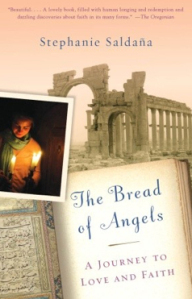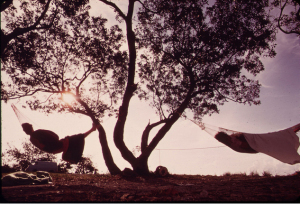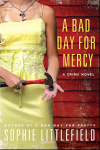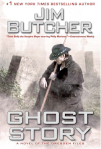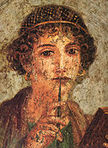Nancy Adams's Blog, page 9
November 1, 2012
My Novel-in-Progress
A few weeks ago, fellow Sister in Crime Alyx Morgan invited me to participate in an ongoing blog chain called “The Next Big Thing” where writers talk about their current works-in-progress. Alyx writes young adult mysteries featuring teenage Holmes-wannabe Tabitha Patterson. If that sounds like your cup of tea, check out her short stories on http://www.alyxmorgan.com/ and http://www.amazon.com/Sarah-Other-Woman-Patterson-ebook. Tabitha is an appealing character and the stories are loads of fun. (Note: Sisters in Crime is a group of mystery writers, not criminals!)
“The Next Big Thing” was started by blogger She Writes to help female authors promote their current work by answering a set of ten questions and then “tagging” other writers, inviting them to do the same. So, without further ado, here is my contribution:

photo by Laertes courtesy of Creative Commons
What is your working title of your book?
CHIMERA. The title is a double-edged reference, first to the French word for decorative gargoyles (chimeres: gargoyles which don’t function as downspouts). The most famous of these are the group that sits atop the gallery connecting the two towers of Notre Dame in Paris. Secondly, it refers to the notion of “chimera” as “an impossible or foolish fantasy” (Webster’s New World Dictionary, 1964).
Where did the idea come from for the book?
CHIMERA started as a short story for an anthology titled FISH NETS, where the story had to incorporate the idea of “fish nets” in some fashion. I wanted to set the story in Paris and started by having two fishermen discover a young woman’s body near the Seine. My main character is a priest, a “fisher of men.”
What genre does your book fall under?
It’s a mixture of urban fantasy and suspense.
Which actors would you choose to play your characters in a movie rendition?
I don’t always think in those terms, but one of the secondary characters is partly based on an old French film star from the black-and-white era, Jean Gabin.
What is the one-sentence synopsis of your book?
A Jesuit professor’s sabbatical in Paris is disrupted when a gargoyle accosts him on the tower of Notre Dame, demanding that he investigate a young woman’s suspicious death.
Will your book be self-published or represented by an agency?
That remains to be seen. I hope to start querying agents sometime after the new year.
How long did it take you to write the first draft of your manuscript?
I wrote it in fits and starts. The first chapter, which started out as a story for the anthology, went very quickly, in only a week or two, and then I sat on the thing for a matter of months. I realized that I really loved this universe and wanted it to become a full-length book, but wasn’t sure how to continue. The initial chapter was written in February of 2011, and bits and pieces of the story came to me over the following months, but I didn’t really sit down and start to work on it in earnest until Thanksgiving break. I finished the first draft the following May, and have since been revising it with the help of beta readers and critique partners.
What other books would you compare this story to within your genre?
That’s a tough one. It isn’t really quite like anything I’ve read, but I can tell you about some of the authors who have influenced this particular book. One of them is Robertson Davies. He didn’t write fantasy per se, but his books have these wonderful, almost fantastical, elements, and one of the characters in CHIMERA has a few details in his background that are a salute to one of the characters in Davies’ DEPTFORD TRILOGY.
Another element that inspired me comes from the Merrily Watkins novels of Phil Rickman: the idea of a place which focuses supernatural energies. Rickman’s novels also feature a self-doubtful member of the clergy as a main character, just as CHIMERA does.
Who or what inspired you to write this book?
My previous novels are all historical mysteries, and after working on them for several years, I wanted a change. I wanted something set in the present day, but something that also preserved that element of otherness which is one of the things I love about reading historical fiction. Paris is one of the most marvelous places on earth, plus it is a city that I know very well–at least parts of it. I also loved the idea of writing fantasy, but it wasn’t until I wrote the story for FISH NETS that all of these things came together.
What else about your book might pique the reader’s interest?
If you’re curious to know what the gargoyles on Notre Dame get up to when nobody’s looking and what happens when one of them recruits a doubting-Thomas priest to join their battle against an evil demon who has risen from the city’s ancient past, I think you’ll enjoy CHIMERA.
***
And here are the writers I tagged
Please tune into their blogs the week of November 5-9
Judith Starkson writes historical fiction.
Her “Next Best Thing” post will appear Thurs. Nov. 8
http://www.judithstarkston.com/
Stacy Juba writes adult murder mysteries and contemporary romance fiction as well as books for young adults and children.
Her “Next Best Thing” post will appear Wed. Nov. 7
http://stacyjuba.com/blog/
Edith Maxwell writes mysteries. Her first novel, Speaking of Murder, is published by Barking Rain Press. A Tine to Live, a Tine to Die, the first in the cozy Local Foods Mystery series, will be published by Kensington in May, 2013.
Her “Next Best Thing” post will appear Mon. Nov. 5
http://www.edithmaxwell.com/
Mary Sutton writes the middle-grade fantasy
series Hero’s Sword as M.E. Sutton. She also writes mystery, including the
Laurel Highlands Mysteries, and contemporary romance as Liz Milliron.
Her “Next Best Thing” post will appear Tues. Nov. 6
theresabodyinthelibrary.blogspot.com
***
Message for the tagged authors and interested others:
Rules of the Next Big Thing
***Use this format for your post
***Answer the ten questions about your current WIP (work in progress)
***Tag five other writers/bloggers and add their links so we can hop over and meet them.
Ten Interview Questions for the Next Big Thing:
What is your working title of your book?
Where did the idea come from for the book?
What genre does your book fall under?
Which actors would you choose to play your characters in a movie rendition?
What is the one-sentence synopsis of your book?
Will your book be self-published or represented by an agency?
How long did it take you to write the first draft of your manuscript?
What other books would you compare this story to within your genre?
Who or what inspired you to write this book?
What else about your book might pique the reader’s interest?
Include the link of who tagged you and this explanation for the people you have tagged.
Be sure to line up your five people in advance.


September 24, 2012
Rain
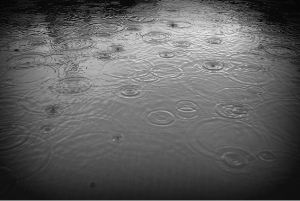
Image from mxgirl85′s photostream, courtesy of Creative Commons
On Labor Day, it rained.
I woke to the pleasant dim light of cloud cover, and by the time I had showered and gone downstairs to make breakfast, it was starting to drizzle. Just barely noticeable if you looked closely. Then the rain increased its tempo to a steady downpour. But there was no wind, no thunder, only the peaceful patter of droplets coming down.
I was glad it was raining. I was glad it wasn’t a day when I had to go into work and brave the elements. If you take public transit, you have to be prepared for rain or you will arrive at work soaked to the skin, as I did a week ago.
I was glad it was raining. The rain would give my husband a day of rest from preparing and painting the trim on our wrought-iron porch railings. He’d spent all day Sunday scraping and washing.
He needed the rest.
I was glad because the dim light let me sleep late after several bad nights the previous week.
I needed the rest.
Rain is Nature’s way–God’s way through Nature, if you believe in God–of showing us our limits. Of gently urging us away from the “24/7″ madness of the culture. In ancient societies, hunters couldn’t hunt, gatherers couldn’t gather, farmers couldn’t farm in heavy rain. It must have been like an unexpected holiday. Perhaps they sat around and told stories on such days, dug into their stores, created a feast. Or lacking stores, ate little, providing those who prepared food (probably the women) rest as well. Resting their digestive systems as well.
Nature can be cruel, too. I don’t want to minimize the tragedies of flood victims, hurricane victims, and others whose lives have been devastated by natural violence. There are whole books there, considerations of theology and, yes, politics that I don’t feel equipped to deal with, at least not here. But in the normal course of the daily, weekly, monthly round, Nature is usually benign if we will open our eyes to receive her wisdom and teaching.
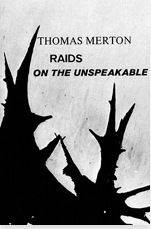 There is a marvelous essay by Thomas Merton called “Rain and the Rhinoceros” that says all this much better than I have. It is one of my favorite pieces of his, published in what is probably my favorite Merton collection, Raids on the Unspeakable.
There is a marvelous essay by Thomas Merton called “Rain and the Rhinoceros” that says all this much better than I have. It is one of my favorite pieces of his, published in what is probably my favorite Merton collection, Raids on the Unspeakable.
Read it.


September 6, 2012
Watching Dog Walking

Smile by choco@Nerima’s photostream. Licensed under Creative Commons
A week or two ago, on my way to the train, I caught sight of a man walking a little dog some ways ahead of me. I had not slept well and didn’t feel particularly enthusiastic about getting up at 6 a.m. to go to the day job. Not in a bad mood exactly, but sunk in a sleep-deprived fog.
The sight of the little dog, however, revived my spirits. He (or she) was trotting beside his person, a dark-haired man in baggy shorts and a T-shirt, who was ambling along in no apparent hurry but not stopping for the little terrier, either.
Being cat-centric, I’ve never owned a dog, but I like to watch animals, and I find it especially interesting to watch dog walkers and note the human-canine interactions. Last year my husband and I walked our neighbor’s dog while she was away for the weekend. It was a fascinating experience deserving of a blog post unto itself, and it gave me some interesting insights into the whole dynamic of walking a dog. Not the simple thing it might seem–but back to the main story.
Th man in front of me respected the little Yorkie’s pace while also keeping his own, not allowing himself to be pulled aside every time the little dog wanted to stop, but never yanking on the leash, either, just continuing his gentle, ambling gait so that Yorkie couldn’t become fixated for too long a time on any particular patch of fascinating smells and eventually resumed toddling along by his person’s side.
When I passed them, I noticed that the man was Asian-American, and now, writing this, I am reminded of the gentle, non-confrontational art of Tai Chi.
Seeing the little animal and the gentle, placid man who held the dog’s leash brought a much-needed smile to my face that morning.
P.S. The cute little fella in the photo is from Japan, a nice reminder of how universal some things are!


August 30, 2012
Veterinarians
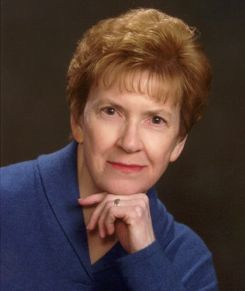 I’m thrilled to welcome one of my favorite mystery authors, Sandra Parshall, as a guest on today’s blog. Her award winning series features veterinarian Rachel Goddard, a passionate, strong-willed character with hidden vulnerabilities. The writing is flawless, the characters three-dimensional and memorable, and whenever I’m in the midst of one of her books, I find myself haunted by the depths of the story, unable to get it out of my mind. If you are new to the series, you should read the books in order, beginning with HEAT OF THE MOON. Just be aware that you may not be able to put this book down.
I’m thrilled to welcome one of my favorite mystery authors, Sandra Parshall, as a guest on today’s blog. Her award winning series features veterinarian Rachel Goddard, a passionate, strong-willed character with hidden vulnerabilities. The writing is flawless, the characters three-dimensional and memorable, and whenever I’m in the midst of one of her books, I find myself haunted by the depths of the story, unable to get it out of my mind. If you are new to the series, you should read the books in order, beginning with HEAT OF THE MOON. Just be aware that you may not be able to put this book down.
Today Sandra offers some thoughts on her main character’s profession of veterinarian. Please join me in welcoming her to the blog.
I’m always amused when a reader or interviewer asks if I’m a veterinarian.
Me? Perish the thought.
The work of a veterinarian like my protagonist, Dr. Rachel Goddard, requires a type of emotional strength I will never possess. A good vet is a marvel to me – and by “good” I mean one who is both skillful and gentle, compassionate with pet owners but tough about doing what’s best for the animal. I imagine it’s not unlike being a pediatrician for very young children who can’t communicate verbally. But a vet carries a burden that no pediatrician does: he or she frequently must make the recommendation that it’s time to bring a painless end to the patient’s suffering.
I couldn’t do it. I can’t imagine myself euthanizing an animal – or working with sick animals day after day. Taking care of healthy pets during routine visits for checkups and vaccines is no picnic either. People go into veterinary medicine because they love animals, then spend their whole careers being hissed at, growled at, scratched and occasionally bitten by their terrified, I-don’t-want-to-be-here! patients
Rachel is made of stronger stuff than I am, and I admire her for it. She cares deeply about her patients, but she does what is necessary to heal them, end their pain, or see to their basic medical needs. I didn’t base Rachel on a particular person, but she shares her gentle approach to caring for animals with our real-life female vet.
When I started writing about Rachel – in The Heat of the Moon (2006) – we’d already had a couple of female vets for our cats, and the friend who volunteered to help me get the animal medicine details right was a woman vet, but I still thought I was clever to choose an unusual occupation for my protagonist. Before long, though, I realized my fiction was following a real-life trend. In 2009, for the first time, women outnumbered men in the veterinary profession, and that majority has continued to grow. Today nearly 80% of veterinary students are female. Vet colleges are now actively working to recruit more male students to maintain diversity.
What explains the shift? A lot of veterinarians might say it’s because their profession doesn’t pay as well as other branches of medicine, and men aren’t as willing as women to accept an average salary of $70,000 to $80,000 after investing the time and money to complete their training. If a man loves animals and wants to work with them, though, the prospect of a middling income won’t stop him any more than it will stop a woman. The change in vet college enrollment may simply be a reflection of the general shift in education: since 2000, women students have outnumbered men in U.S. colleges.
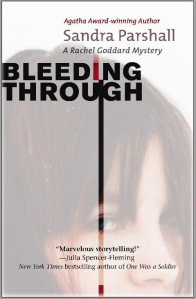
The new female majority is changing the profession. Women will always be the ones who have the babies, and this basic fact of human existence must be taken into account. Flexible schedules and part-time employment have become more common for vets who are mothers. Some prejudice against women still exists, of course, both among pet owners and male owners of veterinary clinics, but the sheer number of women in the profession should eventually eliminate any lingering bias.
I admire anyone, male or female, who chooses to work for the benefit of animals. I hope my respect for veterinarians shows in my portrayal of Rachel. I get a kick out of writing her because she’s so much stronger and smarter than I am, and through her I can vicariously do some of the things I’m too much of a wuss to do in real life.
Sandra Parshall is the author of the Agatha Award-winning Rachel Goddard mystery series. The fifth in the series, BLEEDING THROUGH, will be published September 4.
Visit Sandra at her website, http://www.sandraparshall.com, and join her each Wednesday at http://www.poesdeadlydaughters.blogspot.com.


August 19, 2012
5-Star Paranormal Thriller: Bound by Suggestion
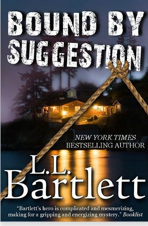 If you enjoy mysteries and suspense with a touch of paranormal, you will want to put L.L. Bartlett’s Jeff Resnick series on your list. You should read the books in order to get the maximum enjoyment, for much of the interest comes from the characters’ personal lives and changing circumstances.
If you enjoy mysteries and suspense with a touch of paranormal, you will want to put L.L. Bartlett’s Jeff Resnick series on your list. You should read the books in order to get the maximum enjoyment, for much of the interest comes from the characters’ personal lives and changing circumstances.
MURDER ON THE MIND, the first in the series, introduces us to Jeff, a regular guy whose life changes forever when a vicious mugging leaves him with some permanent side effects: the ability in certain cases–not all, to share others’ emotions in an unpleasantly visceral way, plus weird visionary flashes that eventually lead him to investigate and solve a murder.
BOUND BY SUGGESTION, the 4th and latest in the series, is structured a little differently from the others. Rather than a who-dunnit, it is a psychological thriller. We know the “bad guy” early on, and the considerable suspense comes from wondering how far the baddie’s twisted plot will go before Jeff starts to wise up.
A secondary plot involving Jeff’s half-brother, Richard, and a second “bad guy” keeps the reader on her toes, wondering how it will all pull together.
I’m normally pretty good at leaving books, good interesting books, in my backpack at the end of the day’s commute, but I was only halfway through BOUND BY SUGGESTION before I HAD to take it out and read it over dinner and then stay up way past my bedtime to finish it. It was worth the lost sleep.
The only downside is that now I’ll have to wait until the talented Ms. Bartlett gives us the next Jeff Resnick book. Meantime I’d love to get some suggestions for other paranormal/mystery/suspense reads. I’m sure there are plenty out there.


August 4, 2012
Transitions
This time of year, from August through September, is one of transitions. For many of us, school begins in less than a month. People are moving, starting new lives. Summer will fade and the autumn rains come.
Transition feels like a major theme in my life at the moment. The day job is changing, radically in some ways. I’m beginning preparations for what I hope will be a transition to a new career as a freelancer. I have just finished my novel’s second major draft. It is a departure from what I have written in the past, and I’m excited about it, but nervous as well.
In many ways, it is an unsettling time.
In the midst of all this, I stumbled upon THE BREAD OF ANGELS, Stephanie Saldana’s wonderful account of the year she spent in Syria.
When 27-year-old Stephanie arrives in Damasus courtesy of a Fullbright scholarship, she is at a crossroads in her life. A rolling stone who has led a nomadic existence since graduating from college, she feels the time has come for her to settle and choose what she will do with the rest of her life.
A spiritual autobiography that will appeal to fans of Kathleen Norris and Thomas Merton, BREAD OF ANGELS takes its structure from the Spiritual Exercises of Jesuit founder Ignatius of Loyola. I was halfway through the book before I realized this fact. Jesuits have been much on my mind lately; the protagonist of the novel-in-progress is a Jesuit priest facing something of a midlife crisis. I had no idea there were any Jesuit connections when I picked up BREAD OF ANGELS. It came across my desk along with the library’s other new acquisitions in the cataloging queue. Such seeming serendipity feels like a sign, a blessing, a signal that I’m on the right track. I started reading Saldana’s book because I’m fascinated by distant places, and the opening immediately drew me in.
I’m still in the midst of Stephanie’s travails, not knowing how it will turn out. This memoir holds as much narrative suspense as any mystery novel, and something tells me I won’t be disappointed when I reach the end. It’s good to know that others have come through times of transition.
Like all good books, BREAD OF ANGELS reminds me that I’m not alone.


June 21, 2012
I lean and loaf at my ease
Saints and Trees is taking a break.
In the meantime, here are some summertime images, quotations, and whatnot, for your delectation:
Enjoy!
I loaf and invite my soul,
I lean and loaf at my ease observing a spear of summer grass.
–Walt Whitman, Leaves of Grass
Summer Books for my Hammock
Gershwin’s “Summertime” with an Island View








June 14, 2012
Medieval Mysteries: Monks or Knights?
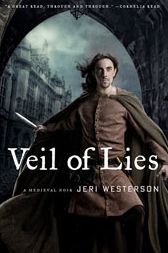 My favorite on-going medieval series is Jeri Westerson’s Crispin Guest. Crispin is a wonderful and wonderfully original character, “a disgraced knight turned detective on the mean streets of fourteenth century London,” as her website states. Westerson’s gritty world of “medieval noir” is very different from most earlier medieval mysteries, especially the iconic Brother Cadfael books of Ellis Peters, a series which arguably jump-started the genre.
My favorite on-going medieval series is Jeri Westerson’s Crispin Guest. Crispin is a wonderful and wonderfully original character, “a disgraced knight turned detective on the mean streets of fourteenth century London,” as her website states. Westerson’s gritty world of “medieval noir” is very different from most earlier medieval mysteries, especially the iconic Brother Cadfael books of Ellis Peters, a series which arguably jump-started the genre.
Monks or knights? Which shall it be? Of course, Crispin is a knight no longer–at least not technically. He retains, however, a knightly frame of mind even as he is cast down into the lowest dregs of society, living hand-to-mouth. Watching his preconceptions transform as he experiences life as the poor live it, is one of the deepest pleasures of the series. Of course, Crispin no longer moves in courtly circles, though his new work sometimes takes him to his old haunts–a difficult experience, as you can imagine.
One of things that I like about the series is, in fact, that it takes place beyond the confines of courtly circles. While my earliest ventures in historical fiction were typically stories of queens and others who lived among the powerful movers and shakers of the time, nowadays I find that I’m more interested in reading about everyday people and how they lived in distant times.
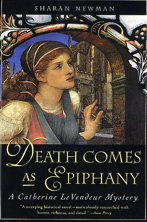 Another favorite medieval series, Sharan Newman’s Catherine LeVendeur, fits this mold, too. Whereas Crispin Guest is a bit of a riff on the courtly knight, Newman’s series has a similar tangential relationship to the familiar world of the medieval monastery. Its heroine, Catherine, starts out as a young novice in the convent of the famous Heloise, of star-crossed “Heloise and Abelard” fame, but during the course of the first book Catherine discovers that, despite her scholarly inclinations, her real vocation lies in the world outside the safe confines of the convent. The series seems to have come to a halt, alas, at least for the time being.
Another favorite medieval series, Sharan Newman’s Catherine LeVendeur, fits this mold, too. Whereas Crispin Guest is a bit of a riff on the courtly knight, Newman’s series has a similar tangential relationship to the familiar world of the medieval monastery. Its heroine, Catherine, starts out as a young novice in the convent of the famous Heloise, of star-crossed “Heloise and Abelard” fame, but during the course of the first book Catherine discovers that, despite her scholarly inclinations, her real vocation lies in the world outside the safe confines of the convent. The series seems to have come to a halt, alas, at least for the time being.
Knights, nuns, and monks all possess a certain mystique. They don’t live like other folks. They have lofty concerns–at least in theory. I’m sure I’m not the only child who was fascinated by knights–partly because I also loved horses. I devoured tales of King Arthur, and still today when we’re in a toy store, I can’t pass a display of colorful knights with their emblazoned shields and fancy helmets–and horses–without stopping to pick them up and examine them one by one.
As I grew older, I became fascinated by monasticism, too. It started, I think, with hearing Samuel Barber’s Hermit Songs in a college recital. I loved the music and promptly went out and bought a recording. The back of the album (yes, those were in the days of the LP) listed all the wonderful texts: translations/paraphrases by W.H. Auden of marginalia written by monks in the manuscripts they were copying. I think what appealed to me most about the Hermit Song texts was the prospect of solitude: “Ah, to be all alone, in a little room, with nobody near me …” begins the final song of the cycle, set to a haunting melody that I still can recall word-for-word. A few years later I stumbled on Thomas Merton‘s Seven Storey Mountain and became a Merton groupie. But I’ve never been tempted to actually sign up. I think the prospect of surrendering complete obedience is far more daunting than the other vows of poverty and chastity.But the monastic life continues to fascinate and inspire me.
Though most of us aren’t cut out for the monastic life and none of us lives in the age of knighthood, both lifestyles hold great appeal and account, I believe, for much of the popularity of the medieval mystery genre.
Which do you prefer reading about when you go browsing for medieval fare: knights, nuns, or something else altogether? Stop by and share.








June 7, 2012
I [heart] Earthworms
Ekostories’ excellent post on Gary Larson a couple of weeks ago (There’s a Hair in my Dirt, May 26) inspired me to write about my love for earthworms.
In those faraway days when I was working in the garden instead of on a manuscript, I encountered earthworms on a daily basis. My fascination with them began when I started to read about organic gardening and discovered the wonders of these diggers of the deep.
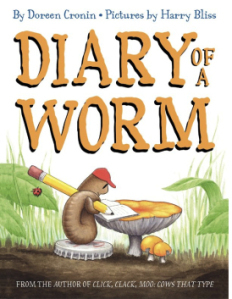
Diary of a Worm by Doreen Cronin; illustrated by Harry Bliss.
One of my favorite books!
Earthworms are nature’s primary way of tilling the soil. A garden rich in earthworms will have lovely, richly textured dirt from the worms’ gentle activity and fertile excrement, but the worms are picky. While they can easily be found if you dig deep enough beneath the grass or an undisturbed patch of ground, garden beds are not always a hospitable environment. Sun, wind, and rain are all dangers to worms if they’re directly exposed, so a bare dirt bed without any sheltering leaves or mulch isn’t a place where they’re going to settle in and make a home.
The best way to attract these little workers into your garden is to compost and mulch. The worms make their way into the compost heap, moving upwards from the soil below (I assume), and come into the garden along with the compost. Layering a blanket of leaves or mulch on top of the bed will give them protection and allow them to flourish. You’ll have wonderful soil and your plants will enjoy the added nutrients a rich soil brings.
But my reaction to earthworms is not merely utilitarian; it is emotional. I love the squirmy little critters. They’re touchingly vulnerable, especially when it rains. Many a time after a big rain, I’ve picked up a worm from the sidewalk and placed it back on the grass, under a leaf if possible. And many a time, I’ve passed dried-out worms that were caught in a cloudburst and then scorched on the pavement by the sun. Or worms that someone has trod on with careless feet.
I know, I know, there’s more than a whiff of sentimentality in this, too uncomfortably close to the blithely unaware Harriet satirized in Gary Larson’s book, but I’m not ashamed of my feelings. Like so much of the natural world, earthworms are both vital and vulnerable, and that vulnerability arouses my maternal instincts. I want them to flourish. I want to protect them.
Part of it, too, is a childish delight in creatures often dismissed with a “yuck!” But unlike spiders, snakes, and other “creepy crawlers,” worms don’t bite. They don’t sting. They’re safe to handle. Perfect for my combination of wimpiness and love for playing in the dirt.
What’s your favorite non-cute-n-cuddly critter? I’d like to know!








May 31, 2012
Farewell to my Favorite Singer
 My all-time favorite singer, baritone Dietrich Fischer-Dieskau, died two weeks ago, on Friday May 18 at the age of 86.
My all-time favorite singer, baritone Dietrich Fischer-Dieskau, died two weeks ago, on Friday May 18 at the age of 86.
I can’t remember precisely when I first heard his recordings. I was bitten by the opera bug during my senior year in high school, and in college, listening to student recitals, I discovered that I loved art-songs (lieder), as well. One of my favorite professors was a huge admirer of Mahler, a composer I’d never heard of till then, and I think the first Fischer-Dieskau recording I purchased was most likely an album of Mahler songs with orchestra.
His voice was like velvet and molten gold, his technique and control extraordinary. He could breathe a barely audible whisper of sound or soar into a full-bodied swell that was never rough or stentorian. But what really drew me was the emotional depth of his singing. This was due in part to his care with words, but also to the musical shading and nuance he brought to every phrase.
We’re fortunate that he recorded extensively. His Don Giovanni purrs with soft, swoon-inducing seduction, his Schubertian heroes pour forth their stories with pathos, his Mahler reaches the heights of religious ecstasy.
The ending of Mahler’s Das Lied von der Erde (The Song of the Earth) is one of the most beautiful passages in all music, and especially fitting as a memorial because the subtext of final section, “Der Abschied” (The Farewell), is death It is moving without being morbid, giving a vision of rebirth as well as sorrow, and Dietrich Fischer-Dieskau’s performance always moves me to tears.
Gustav Mahler
Das Lied von der Erde
VI. Der Abschied (only the poem by Wang Wei, final part)
Leonard Bernstein, Conductor
Dietrich Fischer-Dieskau, Baritone
Wiener Philharmoniker
Decca Records
Recorded 1966
Er stieg vom Pferd und reichte ihm den Trunk
Des Abschieds dar. Er fragte ihn, wohin
Er führe und auch warum es müßte sein.
Er sprach, seine Stimme war umflort: Du, mein Freund,
Mir war auf dieser Welt das Glück nicht hold!
Wohin ich geh? Ich geh, ich wandre in die Berge.
Ich suche Ruhe für mein einsam Herz.
Ich wandle nach der Heimat, meiner Stätte.
Ich werde niemals in die Ferne schweifen.
Still ist mein Herz und harret seiner Stunde!
Die liebe Erde allüberall
Blüht auf im Lenz und grünt aufs neu!
Allüberall und ewig
Blauen licht die Fernen!
Ewig… ewig…
(Translations by Deryck Cooke:)
He alighted from his horse and handed him The drink of farewell.
He asked him where he was going
And also why it had to be.
He spoke, his voice was veiled:
Ah, my friend,
Fortune was not kind to me in this world!
Where am I going?
I am going to wander in the mountains.
I seek rest for my lonely heart.
I journey to the homeland, to my resting-place.
I shall never again go seeking the far distance.
My heart is still and awaits its hour!
The dear earth everywhere
Blossoms in spring and grows green again!
Everywhere and forever the distance shines bright and blue!
Forever… forever…









